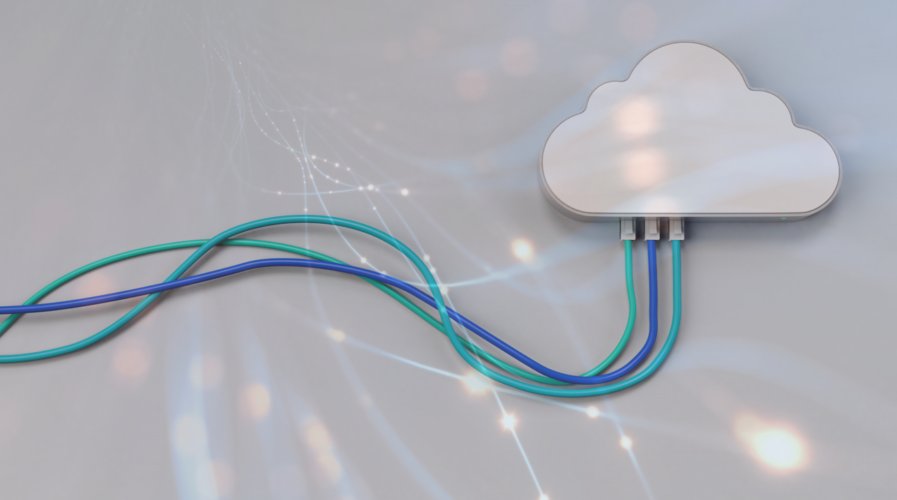
Rising demand for cloud technology: why enterprises are moving to the edge
- One of the challenges faced by businesses in Malaysia when it comes to cloud computing is talent shortage.
- Compared to Singapore, Malaysia is still in the early stages of its cloud computing journey.
Enterprises’ adoption of cloud computing is increasing rapidly in Southeast Asia. In Malaysia, the cloud computing industry is projected to grow to US$ 3.7 billion with a 13% CAGR by 2024. Despite the shift towards the cloud, the remaining on-premise equipment becomes even more crucial as it is the lifeline for connecting to the cloud.
Cloud technology migration brings several advantages to businesses. Besides providing scalability, cost savings, and better security compared to on-premise solutions, it allows companies to access real-time data and analytics for better and faster decision-making.
Enterprises rely more on cloud technology to develop apps as well as to enhance customer experience, enhance safety and security, and become more sustainable. This involves upgrading their on-premise physical infrastructure (power, cooling, networking) and ensuring employee connectivity to critical applications through resilient edge solutions.
Tech Wire Asia caught up with Adrian Koh, the Head of the Secure Power Division for Malaysia and Brunei at Schneider Electric, to discuss the benefits and future of cloud computing for Malaysian companies and how it can assist in meeting business sustainability objectives, while also identifying the hurdles and obstacles in cloud computing.
The cloud adoption trend in Malaysia.
Malaysia is experiencing a shift in how businesses operate, with cloud computing driving force behind this change. This technology has become popular among companies in the country, and for a good reason. The benefits of cloud computing have been able to optimize operational costs, increase return on investment (ROI), and reduce IT equipment, leading to enhanced business sustainability and a reduction in the carbon footprint. Clouds offer scalability, making them a more accessible solution than local servers.

Adrian Koh, the Head of the Secure Power Division for Malaysia and Brunei at Schneider Electric (Source – Schneider Electric)
The potential and outlook of cloud computing for Malaysian organizations still hesitant about making a move are immense. For these organizations, the loss of competitive edge is a significant concern, as traditional systems are becoming increasingly inefficient and increasing costs and risks over time. However, the transition to cloud computing can be difficult, so businesses need to find the right partner to guide them through the process.
“One of the challenges faced by businesses in Malaysia when it comes to cloud computing is the shortage of skilled talent,” Koh noted. “There is a gap between the demand and supply of knowledgeable professionals, making it difficult for organizations to find the right expertise. Furthermore, many skilled professionals leave the country for better opportunities and higher compensation packages, exacerbating the problem.”
Security is also a significant concern for businesses, as they are often hesitant to store data externally due to concerns about security measures. Finally, the cost of adopting a cloud service and the need for data migration across functions make many businesses hesitant to invest, as they fear employee resistance and a potential loss of investment.
To overcome these challenges, businesses in Malaysia must follow some best practices while implementing cloud computing. According to Koh, these best practices include having a well-planned migration system, communicating and getting buy-in from employees, utilizing expertise, and continuously evaluating and updating the system. Additionally, businesses must ensure that the right metrics, physical and cybersecurity monitoring, operational practices, and redundant power and cooling are in place to ensure tangible improvements.
Moving to the edge despite the advantages of the cloud.
Despite the advantages of the cloud, more businesses are moving to the edge. This is due to increased connected devices and the need for more data processing. Edge computing provides a physical computing and storage infrastructure near where the data is generated, reducing data link latency and improving data privacy and compliance with regional data privacy regulations. It also addresses the high expense and inefficiency of resources by improving data processing and transport time and increasing the availability of data when and where it is needed.
“Most industries are heading towards Industrial 4.0, where ET (Engineering Technology) and IT (Information Technology) are merging. Industry 4.0 is focused on connected devices that process more data before it is transported to the cloud. Edge computing ensures that data is secured and provides security within the edge computing itself,” explained Koh.
Schneider, a leading company in this area, has four pillars for moving to the edge – sustainability, efficiency, adaptability, and resilience. These pillars focus on responsibly meeting business needs without compromising the future, optimizing cost, speed, and capital to increase ROI, accommodating new technologies, and reducing vulnerability to unplanned downtime.
Schneider’s EcoStruxure platform is part of their edge software and digital service program. This program was recently launched to support IT solution providers in growing their software and digital service business, managing customer lifecycle and generating recurring revenue streams.
“In May last year, we announced the expansion plan of our new full-fledged Service Operations Center,” Koh added. “This supports businesses in realizing the full potential of digitization, and we are working towards doubling our services in the next four years, with 2022 as a pilot in providing enhanced digital solutions, consulting services, and service contracts to enterprises, aligning their business growth strategies with Malaysia’s digital goals.”
When compared to Singapore, Malaysia is still in the early stages of its cloud computing journey. Singapore is a crucial hub for digital infrastructure in the Asia Pacific region, with most of its hyperscale data centers deployed there. Currently, it has more than 60 data centers with a footprint of over 250 megawatts. However, with the increased investment by hyper scalers in Malaysia, the country has the potential to catch up and become a key player in this area.
READ MORE
- The criticality of endpoint management in cybersecurity and operations
- Ethical AI: The renewed importance of safeguarding data and customer privacy in Generative AI applications
- How Japan balances AI-driven opportunities with cybersecurity needs
- Deploying SASE: Benchmarking your approach
- Insurance everywhere all at once: the digital transformation of the APAC insurance industry


